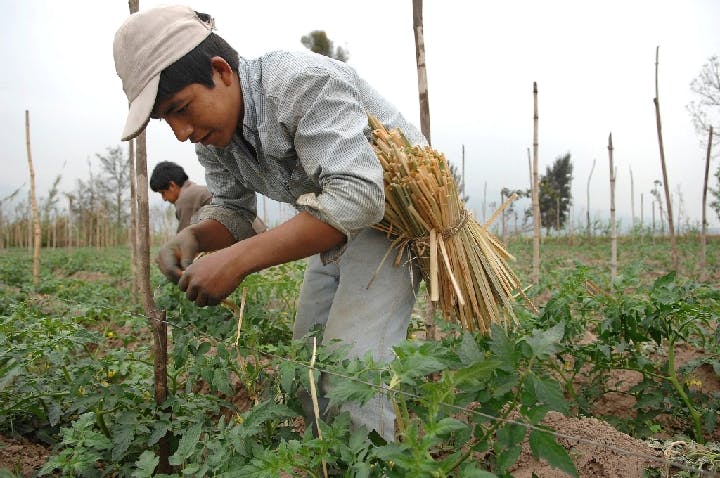Peasant farming in the age of Monsanto
– Carlo Massimo
Amid growing agribusiness in South America, Argentina’s peasants are joining forces.
If you read business page statistics, agriculture in Argentina is booming — soybean production, for instance, has tripled since the early 1990s. Agricultural conglomerates and large-scale farmers are investing in better fertilizers, increased mechanization, and seeds that are genetically modified to ease the stresses of harvest and reduce soil erosion.
But for Argentina’s traditional peasantry, this prosperity is nothing to celebrate. In rural provinces like Cordoba and Santiago del Estero, the agribusiness explosion has come at the expense of the campesinos, indigenous and Criollo peasants whose traditional family farms cannot compete with industrial mega-farms. In the past twenty-five years, evictions of Argentinian farmers have skyrocketed, the cost of irrigation water in the arid north has risen, and people in the countryside have suffered the consequences of pesticides made and pushed by major multinational companies like Monsanto.
The peasantry, by definition, is a distinct class from Argentina’s big farmers. Most of the peasants’ work goes toward consumption at home, and the surplus produce they sell goes to local, not international, markets. It’s labor-intensive work that rarely involves employment beyond a single family, and accrues little to no capital.
This style of agriculture has disappeared in many countries, eaten alive by modern commercial farming. In Argentina, against all odds, it’s holding out. A recent article in Latin American Perspectives has chronicled the twenty-four year career of an organization called the Peasant Movement of Santiago del Estero, or MOCASE, whose mission is to make the peasantry a viable class through cooperative action. User ownership, control, and benefit are MOCASE’s guiding principles, the users being the campesinos themselves — not foreign investors — and the end result being an environmentally sustainable farm economy in line with traditional values.
To that end MOCASE establishes communal wells, pools money to save farms from eviction, and runs worker-managed factories for traditional foods and crafts. Its leadership is more horizontal than vertical, emphasizing dialogue over command; it does not, however, indulge in what one MOCASE activist called “welfarism.” Only active members in good standing can receive MOCASE’s help, and MOCASE has pressured peasants to give up some of their oldest traditional practices, like charcoal burning, on grounds of ecological sustainability.
It’s an uphill battle, of course. MOCASE does not have a war chest to match a company like Monsanto’s, and credit lines, essential for any meaningful investment, are hard to come by in rural South America. While the authors of the study document what MOCASE’s cooperative agriculture looks like, they have little to say regarding the results.
What the study does emphasize is how MOCASE’s battle with agribusiness is part of a much wider historical moment, the reaction to neoliberalism across Latin America. The peasants who make up MOCASE are participating, however broadly and indirectly, in the same indigenous, post-NAFTA political current as the EZLN in Chiapas, Hugo Chavez’s Bolivarian movement, and the leftist administrations of Ecuador, Bolivia, and Nicaragua. MOCASE’s fight is about more than digging wells and making cheese: they are taking on neoliberalism as a transcontinental phenomenon.
But the study’s lack of results — what has MOCASE achieved, beyond surviving twenty-four years? — suggests another problem. The campesinos may well be a dying breed, unviable in a global economy. The peasants that MOCASE represents are, in a certain light, retrograde, even reactionary. They have no place in the shiny, Silicon Valley-ized vision of the future.
MOCASE has wider problems than finding lines of credit. Argentina’s peasants need a foothold in the twenty-first century, and it’s still not clear that they’ve found it.
* * *
The Source: Navé Wald, “In Search of Alternatives: Peasant Initiatives for a Different Development in Northern Argentina,” Latin American Perspectives 42.2 (2015): 90-106
Photo courtesy of World Bank/Nahuel Berger
